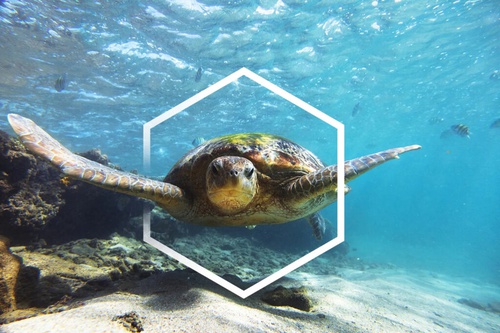
EXPERIENCE SCIENCE
STUDY THE WORLD
A K‑8 NGSS STEM CURRICULUM THAT FUSES PHENOMENA‑DRIVEN, PROJECT‑BASED LEARNING FOR STUDENTS WITH PROFESSIONAL DEVELOPMENT FOR TEACHERS.
Collaborate Science™, powered by Accelerate Learning, leverages meaningful, hands‑on, inquiry‑based projects so students develop a deeper understanding of their world as they learn about science.
Students learn best by doing. Collaborate Science provides meaningful learning opportunities for students to touch, observe, hypothesize, and interact directly with phenomena as they work with peers to find solutions to a driving question.
With a sustained, immersive professional learning plan, Collaborate Science presents teachers with the tools they need to take ownership of their continuing education and create a collaborative learning environment for their students. Recognizing the need for teachers to shift roles into facilitators of the student discovery experience, our professional learning program offers support every step of the way.
WANT TO LEARN MORE?

Your Classroom, Reimagined
IMMERSING STUDENTS IN REAL-WORLD PROBLEMS AND PHENOMENA FOR A SYNERGETIC LEARNING EXPERIENCE.
Collaborate Science is a digital curriculum enhanced by print, bringing science to life with practical, real-world problems for students to solve in a collaborative environment. Students consistently build on their prior knowledge as each unit progresses, cementing their understanding of learned skills and concepts as they apply them to the overall project. This learning approach stays connected to the Next Generation Science Standards by promoting higher-level thinking and allows students to engage in their communities. Teachers have engineering challenges, scientific investigations, math and literacy connections, and performance-based assessments—all available at the touch of a button. We proudly provide a suite of focused professional development opportunities for the entirety of your implementation.
Curriculum Features
COLLABORATE SCIENCE IS MODERN AND UP TO DATE TO ENSURE EVERY DETAIL SUPPORTS WHAT TEACHERS AND STUDENTS NEED.
HTML5 PLATFORM
Access Collaborate Science on any device with an internet connection.
INTERACTIVE RESOURCES
Student resources dive deeper into the phenomena – 360° images, interactive maps, image slideshows, links to external videos and text, and more.
STUDENT ASSIGNABILITY
Assign student notebook, reading passages, homework, and interactive resources digitally to students.
LITERACY AND MATH CONNECTIONS
Embedded literacy and math connections throughout the lessons, such as K-2 play–based extensions-.
BILINGUAL AND ELL SUPPORT
Embedded language supports and WIDA-based- discourse move prompts for teachers, as well as student resources and teacher presentations available in both Spanish and English.
ACCESSIBILITY FEATURES
Features include text-to-speech, highlighting, font type and size, high contrast color mode, speaking rate, and highlighting of each word as it’s read aloud.
ASSESSMENTS
Formative and summative assessments of student learning including unit final artifacts, post-unit assessments, and an assessment bank where teachers can create customized, standards-based- assessments.
MULTIPLE GRADE‑LEVEL UNITS AND LESSON SETS
Units for grades K–8 with learning sets exploring the driving question.
STANDARDS ALIGNMENT
Unit standard alignment charts for NGSS, SEL/Equity, Discourse Moves, and Common Core for Mathematics standards broken down by learning set.
Exclusive Tools for a Superior Learning Experience
UNIQUE FEATURES ALLOW TEACHERS AND STUDENTS TO STAY ORGANIZED AND ON TRACK AS THEY PROGRESS THROUGH THE CURRICULUM.
STUDENT NOTEBOOK
Collect student work, notes and ideas all in one place to help students understand their discoveries and thinking.
DRIVING QUESTION BOARD
Guide the entire project using the Driving Question Board to get students involved in asking questions and solving problems related to the real world.
TEACHER TOOLBOX
A variety of grade band resources and tools to help get the most from the curriculum, including the anatomy of a unit, how to use a Driving Question Board, learning sequences, alignments, and materials lists.
STEMcoach
An additional resource for teacher support in facilitating science instruction.
EXPLORE THESE FEATURES AND TOOLS


A Curriculum for Everyone
Education doesn’t happen in a vacuum. Collaborate Science provides extensive support for everyone involved in the learning process, so students have every opportunity to succeed.

STUDENTS
Supports high levels of student engagement and responds to student ideas and cultural and linguistic backgrounds. Includes performance-based equity and social and emotional learning goals while developing critical thinking, collaboration, creativity, and communication.

TEACHERS
Detailed table of contents and storylines on both a unit and lesson level, allowing teachers to best understand the content and Driving Questions. External links for better comprehension of the subject matter underlying the lessons. Step-by-step lesson plans as a lesson roadmap.

PARENTS
Interactive portal to involve parents in student learning by keeping them informed about student projects and progress. Family interviews to facilitate connections and prior experiences.

The identification and rich description of the core teaching practices that are central to supporting student learning in project-based classrooms, and the construction of teacher development programs that support high quality project-based teachers in these practices, is important to improving student outcomes at scale. Additionally, improving project-based instruction through work on core practices has significant potential to address issues of equity and social justice in education
Lucas Research
“Core Practices For Project-Based Teaching”
https://www.lucasedresearch.org/grant-awards/core-practices-for-project-based-teaching/





